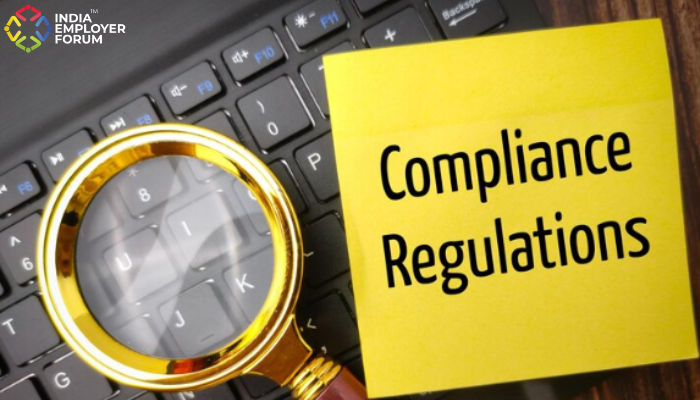Unconscious biases at workplace are quite prevalent in organizations. These biases could be based on age, caste, religion and gender. There are several gender biased perceptions at workplace like women with children lack ambition, their leadership capabilities are inferior to men and they don’t want to move to leadership roles. While many organizations have developed policies prohibiting gender discrimination and created structured programs to deal with cultural bias in the workplace, the employees are not always receptive.
Human resources firm Randstad conducted a survey, where 70% of the male respondents from India mentioned that they prefer a male manager. Also, globally women are paid just 63% of what men earn and women in India are paid 20% less than men at supervisory levels. Also, female dominated industries tend to pay less than those with higher male representation. These are some obvious and measurable parameters of gender bias at work and it goes way beyond pay discrimination and unequal representation of women at senior levels. While organizations are making an effort to increase gender diversity at the workplace, they still struggle to eliminate biases that are unconscious and to create equal opportunities across genders.
The Randstad Gender Perception Survey 2019 shows that 63% of women have either experienced gender discrimination or know of women who have faced it at the time of hiring. While many large organizations have established clear policies against discriminatory hiring practices and have even set diversity targets, these are only primary interventions.
Organizations need to go beyond these by designing structured interviews and creating gender-neutral job descriptions. Like many international organizations, Indian organizations must implement policies like blind hiring which requires the HR to make job applications anonymous in order to eliminate subconscious gender bias at work.
You might also be interested to read: Higher Ratio Of Female Managers Does Not Reduce Gender Pay Gap In India
Qualified women are often overlooked in roles that have traditionally been male dominated like engineering, science, legal and even marketing and sales jobs that require extensive travel. Stereotypical notions associated with genders often hurt women more than their male counterparts. While men are perceived to be physically and emotionally stronger, women are considered to be less focused but with higher emotional intelligence and excellent organizational capabilities. Due to this, men are entrusted with ambitious leadership roles while women are limited to supportive roles mostly. Women also suffer the undue consequences of motherhood when they are not considered for promotions or greater responsibilities as they are perceived to be incapable of balancing work and family. It is important for organizations to set diversity targets across all levels and job roles to ensure that they overcome gender bias at work.
Creating gender equality in organizations require complete commitment to the cause along with a supportive ecosystem that provides equal opportunities to women as well. Organizations need to enhance the visibility of the existing women leaders in the organization, set up a network of female employees, provide leadership training to women and create a 360-degree review process that is fair to all employees irrespective of their age, caste, creed, religion or gender. Employee policies also need to be more gender neutral so that everyone can get equal visibility in the organization and also have equal opportunity to address personal commitments. For instance, companies have rolled out the policy across the world of minimum 14 weeks of parental leave policy irrespective of gender that is effective from the first day of employment.
While the change is slow-paced, there are some organizations which are taking a lead in tackling various kinds of biases at workplace and investing more time and effort in sensitizing their leaders. For instance, a leading global consulting firm, organized a two-hour session for its partners, including the entire India leadership team, that covered nine different kinds of biases in the workplace, and gender is only one of them. Various other organizations are holding meetings and off-sites for leaders to discuss about establishing a culture that promotes diversity, inclusiveness and performance while being people- centric. The need for making small amendments like not having formal business discussions over dinners which women colleagues might not be able to attend can go a long way in ensuring inclusiveness.
Various other Indian organizations are trying to address unconscious biases at workplace by developing training programs, creating a separate employee resource group for women, conducting street plays and circulating monthly leadership blogs. The idea behind these programs is to ensure that employees talk about bias in the workplace, get aware that they exist and hence, make an effort to avoid it consciously. Some organizations are also opting for machine-based tools like psychometric tests and gamification to reduce unconscious biases at workplace while recruiting a candidate. Artificial intelligence is also being used by organizations to remove any possible biases, especially where the volume of hiring is large.
Combating unconscious biases at workplace can also reduce employee turnover. When one of the largest online grocery retailers in India, faced a high rate of attrition at its distribution center in Pune, they decided to hire more women. To prevent unconscious gender bias at work, the company organized a gender sensitization workshop. Over the years, their distribution centers across India, hired more women pickers, a job that used to be dominated by men completely, and in turn, improved talent retention.
Another leading global consulting firm, has a theatre group that addresses the issue of unconscious bias in the workplace among many others. They enact various workplace situations which includes hiring, employee engagement, performance evaluation for women on maternity leave, sexual harassment and gender sensitivity. While these situations are enacted by the theatre group, solution to these situations are crowd sourced from other employees in the audience. While these measures might not eliminate unconscious biases at workplace completely, they certainly help in initiating a meaningful conversation and increase awareness.
There is a lot that needs to be done to address the challenge of biases at workplace, improve the participation of women in the workforce, ensure pay parity and meet diversity targets. The work environment needs to become conducive for women by understanding and providing the support systems they need. Having a leadership that is diverse can create an inclusion mindset in the organization. The most important way of removing subconscious bias from people’s mind is to first bring it to their consciousness. Raising that awareness and its impact on others is highly critical to weed out the biases at workplace.
References:
- India Inc scrambles to weed out biases at workplace- Namrata Singh, 05 October, 2019
- Unconscious Bias in the Workplace- Liffy Thomas, 08 November, 2018
- Companies Targetting Unconscious Bias to Maintain Diversity at Workplace- M Saraswathy, 03 July, 2017
- Eliminating Gender Bias to Create a Fairer Workplace- Randstad
- Cos Look to Weed Out ‘Unconscious Biases’- Namrata Singh, 24 October, 2017




